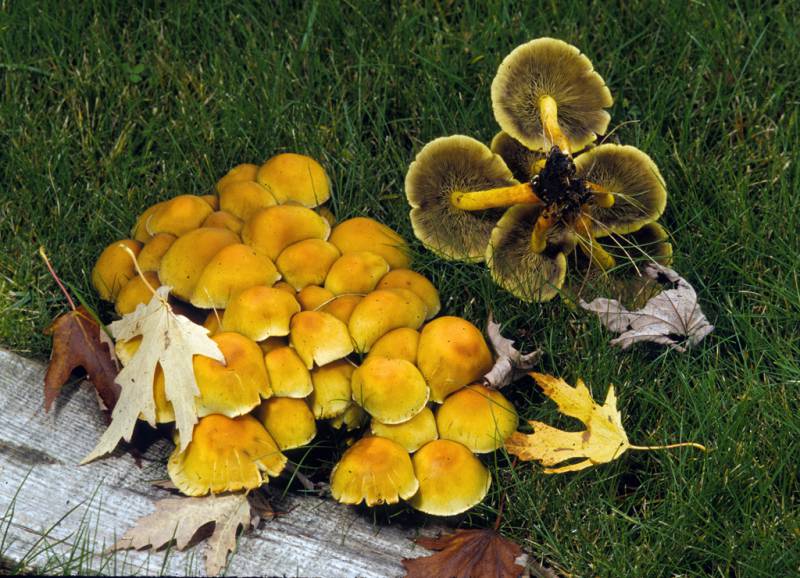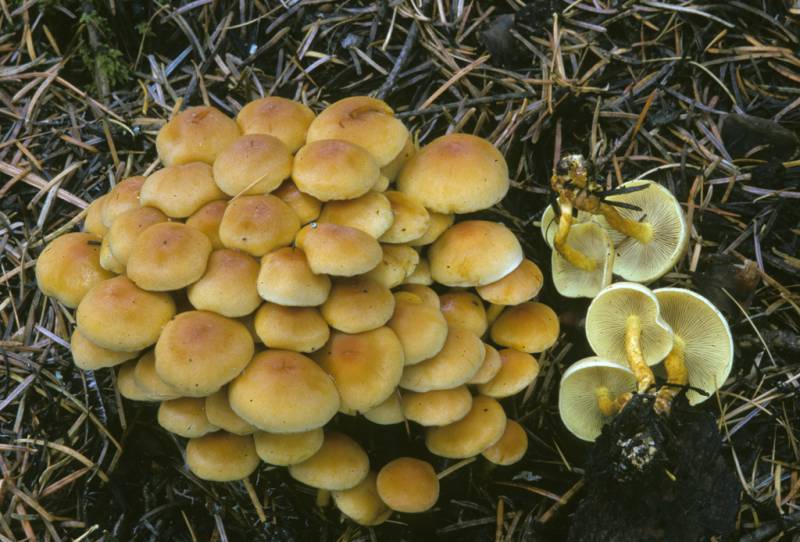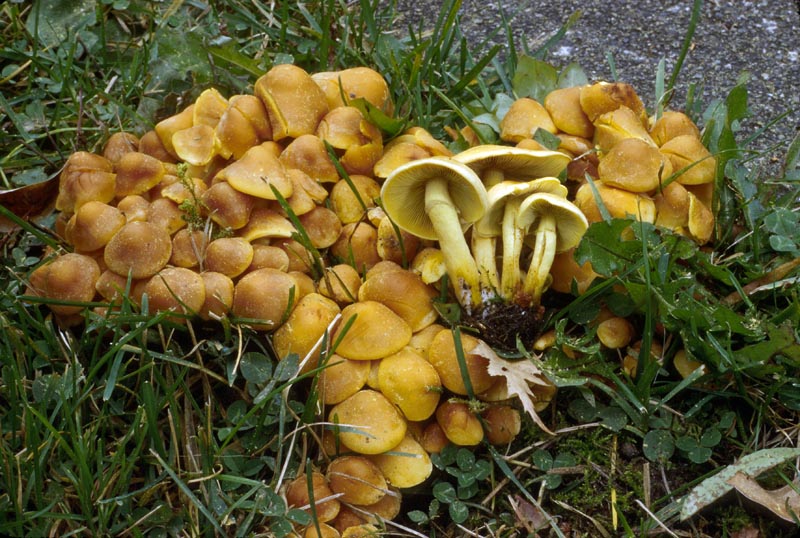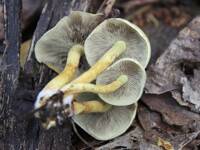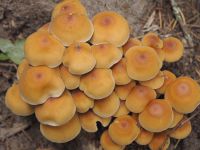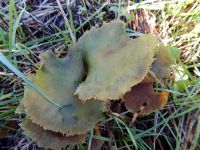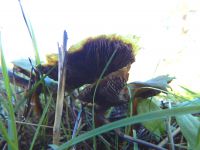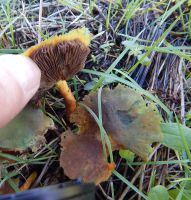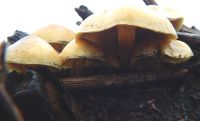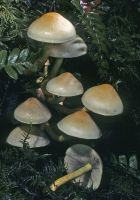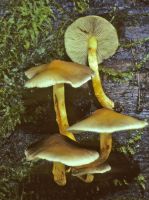Distribution: Common in PNW
Habitat: Grows in clusters on logs and other large woody debris.
Conservation Status: Not of concern
Edibility: H. fasciculare is intensely bitter tasting. This bitter taste renders it inedible, and it has been reported as being poisonous.
sulfur tuft, clustered woodlover
H. fasciculare is intensely bitter tasting. This bitter taste renders it inedible, and it has been reported as being poisonous.
Hypholoma fasciculare is one of the commonest mushrooms in the PNW and one of the easiest to identify when found in its typical form. In the words of Alexander Smith, “It is a truly beautiful fungus when at its best,” but often becomes sordid, water-soaked, and far less attractive. It is one of three similar-looking hypholomas that grow in clusters on logs and other large woody debris, along with H. capnoides and H. sublateritium. The latter has brick-reddish caps, and grows on hardwood in central and eastern North America, although there are a few reports of it occurring in B.C. Like H. capnoides, H. fasciculare grows in tight clusters (“fascicles”) on conifer wood, but it also occurs on hardwood and seems less restricted to logs, sometimes even appearing to be terrestrial. When found on the ground, it can be harder to recognize, especially if it is not in a cluster. H. fasciculare usually has brighter colored caps than H. capnoides, has bright greenish yellow gills when young (hence its common name), and is intensely bitter tasting. This bitter taste renders it inedible, and it has been reported as being poisonous.
PNW Herbaria: Specimen records of Hypholoma fasciculare in the Consortium of Pacific Northwest Herbaria database.
CalPhotos: Hypholoma fasciculare photos.

